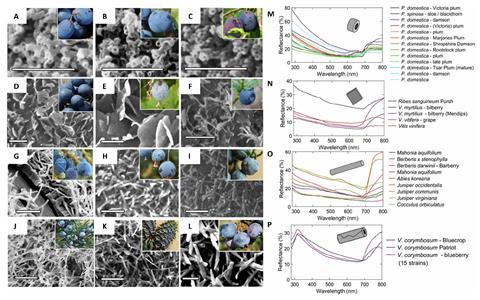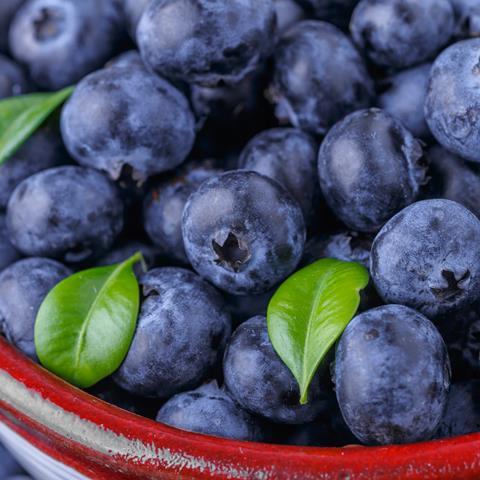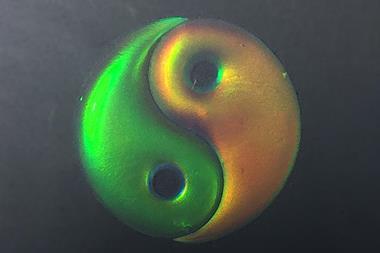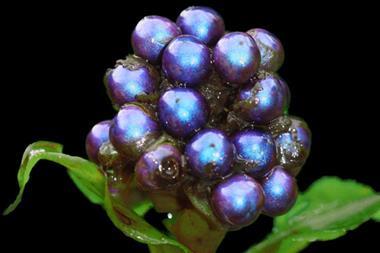Despite their name and appearance, blueberries do not contain any blue pigments. New research attributes their blue hue to interactions between light and the nanostructures found in their natural waxy coating. Further investigation of this wax in the laboratory may help inspire new sustainable, self-cleaning and -repairing optical biomaterials.
Several types of fruit, including varieties of grapes, plums and damsons, feature a waxy epicuticular coating known as bloom that protects them from predators and pathogens and helps make them waterproof and self-cleaning. While these fruits are rich in dark red anthocyanin pigments, when their bloom is intact they appear blue. Vertebrates can see blue light well and such fruits are attractive to them, but blue-reflective pigments are costly to create. Structural colouration, commonly seen in the feathers of brightly coloured birds, relies on microscopic structures in a surface changing how light is reflected, and can be a less costly way of appearing blue.
Researchers from Germany, Finland and the UK teamed up to sample a variety of blue bloom-covered fruits. Analysing the produce with scanning electron microscopy revealed randomly arranged, non-spherical nanostructures in the bloom that interact with light, scattering it to create their blue hues. Across a range of bloom fruits, the researchers found four wax crystal shapes: ring, rod, slab and tube. Despite differences in the morphologies of the wax nanostructures, they all produced very similar optical spectra and look visually alike to humans.

By dipping Oregon grapes/holly-leaved barberries in chloroform, the team was able to extract the bloom layer from the fruits. They then recrystallised the wax using thermal evaporation and deposited it under vacuum onto black card. Although the wax appeared transparent when in solution, and white as a solute, when spread onto paper, the bloom wax self-assembled into a nanostructure with the same deep blue colour.
With further research into its optical properties, the researchers believe bloom wax could inspire the development of non-toxic biomaterials for applications such as colourants in cosmetics or alternatives to plastic films on foods.
References
R Middleton et al, Sci. Adv., 2024, DOI: 10.1126/sciadv.adk4219


















No comments yet